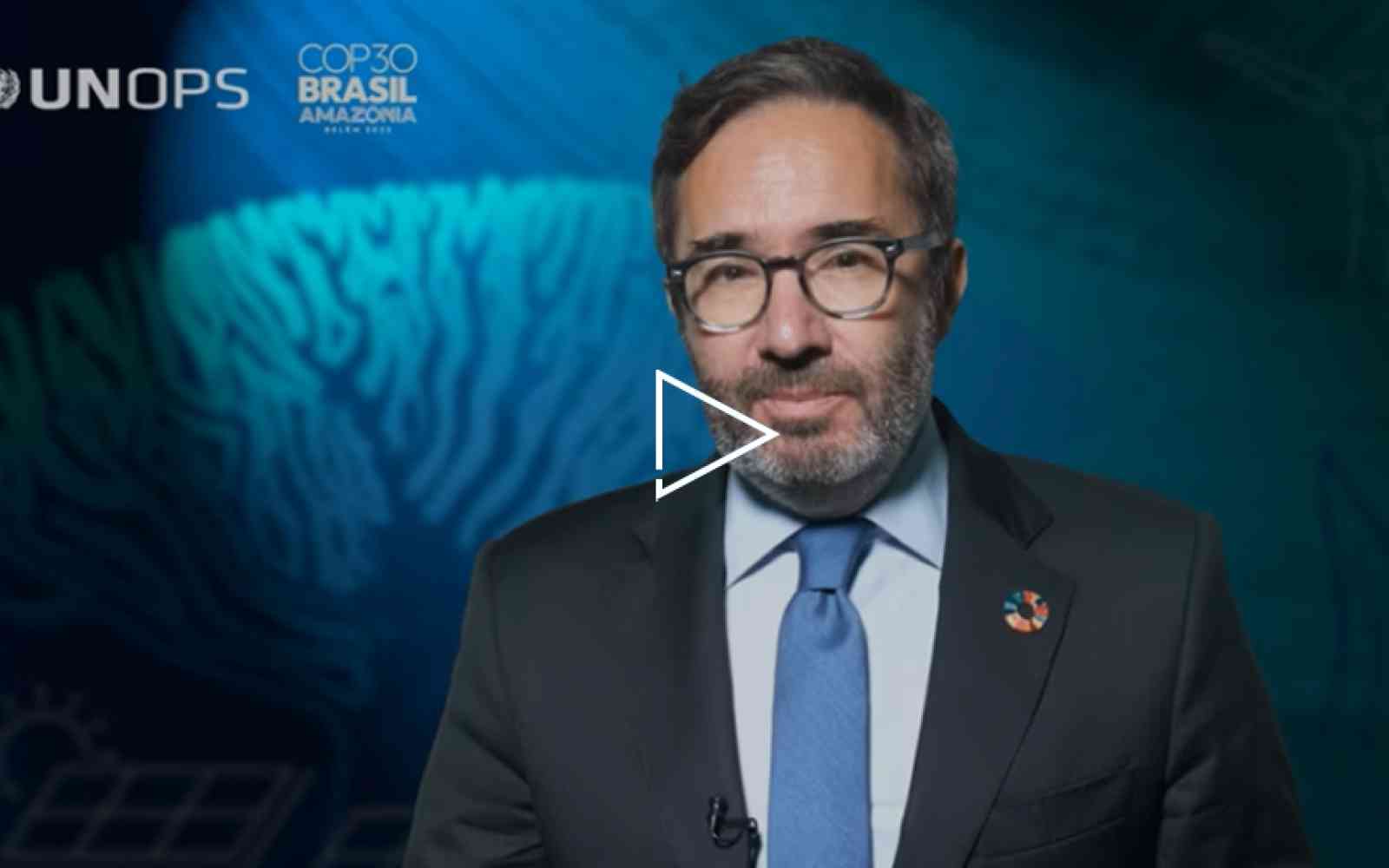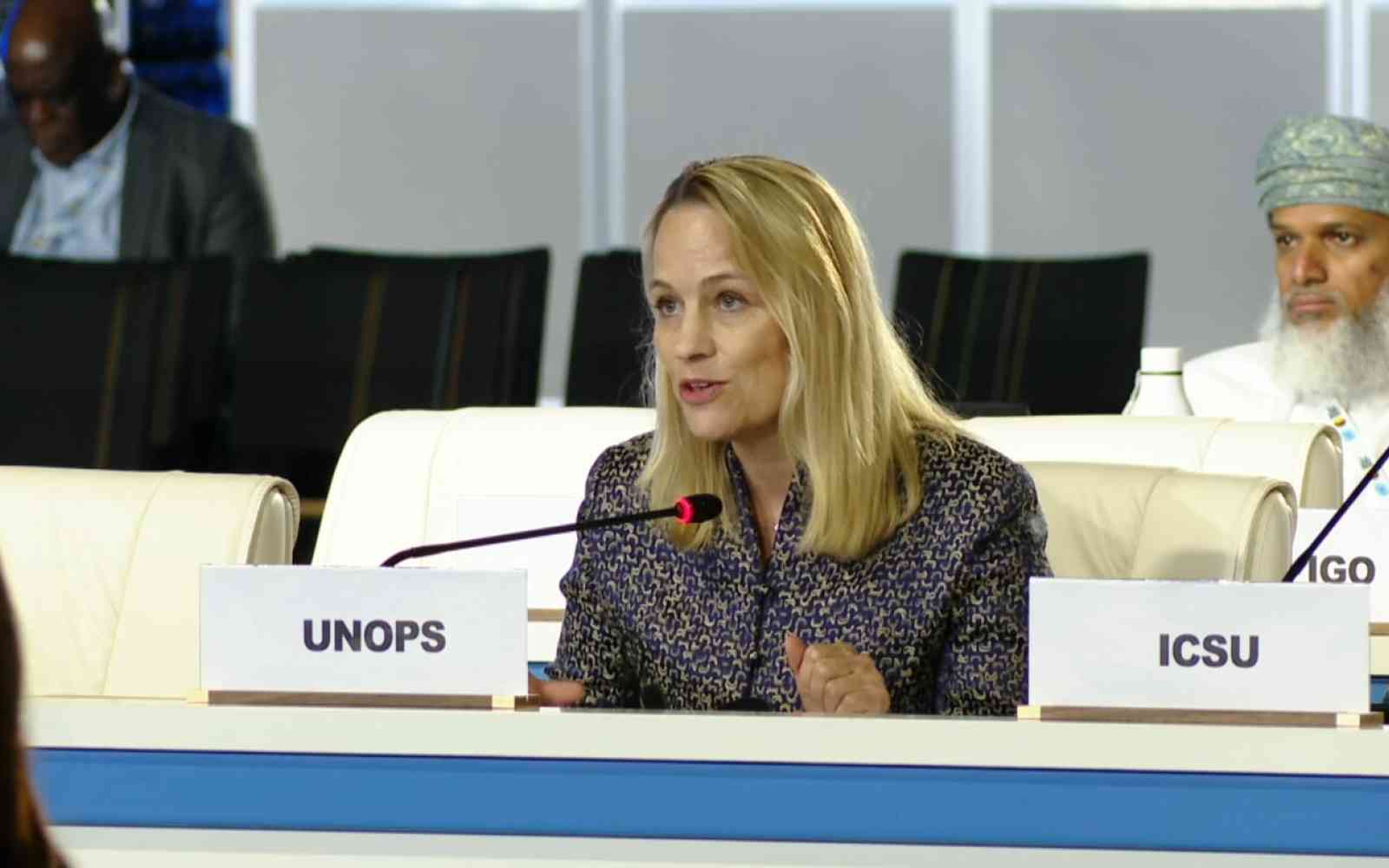The United Nations Office for Project Services (UNOPS)
Developing infrastructure to support the SDGs
Keynote speech by Grete Faremo, Under Secretary General and Executive Director of UNOPS, at GIIN Investors Conference, 8 December 2016
[Check against delivery]
Ladies and Gentlemen,
Last week, I visited Guinea, one of the three countries – alongside Liberia and Sierra Leone – that were the hardest hit by Ebola two years ago. It was a strong and emotional visit, seeing people bravely – and largely on their own – picking up the pieces of a natural catastrophe and rebuilding their lives and their country.
Why did that tragedy happen? Why did Ebola get so out of control this time? The answer is as simple as it is surprising: a lack of basic infrastructure.
The main reason the epidemic ravaged these three countries uncontrolled for months and killed more than 11,000 people was simply that there was no system of local health centres in the countryside. No passable roads to bring medical teams to villages and the sick to hospital. No network coverage to enable health personnel to share information and get vital messages out to the population through their mobile phones. And when the epidemic reached the cities, the lack of basic sanitation and water systems maximized the number of people who got in contact with the virus.
Guinea, I am happy to say, is recovering well, and UNOPS, the organization I lead, is currently building or repairing more than 100 health centres throughout the country – part of an effort to never allow this kind of outbreak to happen on such a scale ever again. Seeing this work was truly inspiring, and it reaffirmed my belief that the work of bringing infrastructure to developing countries can literally be a matter of life and death.
Amsterdam is a very good place to discuss the importance of infrastructure. Of course, the Netherlands has always been known to owe its wealth to trade. But you can just as well argue that the Netherlands is the ultimate example of the triumph of efficient, sustainable infrastructure.
The dikes, the sea- and airports, the transformation of Amsterdam from a wet bog to a world city, the canals and roads; these are all examples of how essential infrastructure investments are – not only for a country's economic growth and well-being, but also for its direction in history and its identity.
This understanding of the fundamental importance of infrastructure is reflected in the Sustainable Development Goals – this extraordinary global consensus document for a vision and a plan for our common immediate future.
Infrastructure development stands at the centre of most of the 17 goals. This translates into some rather staggering figures. Despite the lack of reliable data McKinsey estimates that in the period between 2015 and 2030 at least USD 89 trillion is required for sustainable infrastructure development.
Forty trillion dollar – or 43 percent of the total amount – goes to energy investments. Transport-related investments absorb USD 27 trillion, followed by water and waste with USD 19 trillion.
That means around $6 trillion per year for the next 15 years.
The vast majority of these sums are needed in what we often call developing countries.
Where should this money come from? We know that for a number of middle income countries, public investments will play an important role. The improved public revenue systems of middle income countries such as China, most countries in south America and elsewhere, will drive a lot of infrastructure spending in these countries.
For the rest – the lower middle income and low-income countries in Africa, South and Central Asia, the Caribbean and other island states, the usual response used to be "development assistance". But as most of us are aware by now, annual ODA figures of around $140 billion don't get us very far.
ODA will only be a small portion of what is needed, but a crucial one. The "smart use" of ODA can leverage aid money many times over, by reducing risks and create environments where private capital can invest. This is what I want to talk to you about today. How do we create the conditions to channel large amounts of private capital towards sustainable infrastructure investments in developing countries. Investments that do good while earning returns on investment.
I believe it is possible, and at UNOPS, we are developing a whole new business line to help this happening.
You may think: 'yes we see the need to invest in development … but not with my money,' And for now, you are right – most of the time.
Today, the number of investable infrastructure projects able to absorb large amounts of debt or project finance in developing countries is limited.
In addition, the projects that are available may be developed in countries in which you have no experience and feel rather uncomfortable investing in.
In the recent past my team and I have spoken with over one hundred investors – many of them institutional investors. Most of these investors see the market gradually moving in what I would call 'the right direction'. However, they still have a clear preference for making investments in the developed world. If they invest in growth economies they usually limit themselves to China, India, South Africa, Mexico, and Brazil – although even some of these countries may have lost some of their attractiveness in recent times.
However, change is on its way. A step-by-step entrance by mainstream investors in non-OECD countries is becoming visible. The greatest need will be in middle-income countries with per capita incomes between $1,000 and $12,000 – and particularly in the power sector.
Even though the risks may still be significant in many of these countries, some of them are politically stable, have a functioning rule of law, and investment projects on the shelf that meet institutional investors' requirements. In addition to India you can think of Asian countries like Indonesia and the Philippines. In Latin America countries like Chile, Peru or Paraguay increasingly offer attractive investment opportunities, while in Africa countries such as Ghana, Kenya, Senegal or Rwanda are gradually emerging.
So, what can the United Nations do to help accelerate this development towards large-scale private sector investments in sustainable infrastructure in developing countries?
Let me first let you know a bit more about UNOPS.
The United Nations Office for Project Services is an operational arm of the UN. UNOPS supports the international sustainable development agenda and the investments in infrastructure resulting from this agenda. UNOPS works with UN partners, governments, multilateral organisations, and the private sector by managing projects, developing sustainable infrastructure, and procuring goods and services. We employ 10,000 personnel in more than 80 countries and have an annual turnover of $1.5 billion.
UNOPS is the only member of the UN family that is fully self-financed. That means that UNOPS does not ask for and does not receive core funding by donors. We are a non-profit entity that is financed by fees on the services we render. Like the private sector, we strive for efficiency in everything we do.
We believe we can contribute to sustainable infrastructure development based on our knowledge and skills and on more than 20 years of experience in developing countries.
More relevant, UNOPS can help to control and mitigate the risks involved in infrastructure investments in growth markets and developing economies:
- We actively support the development of national infrastructure plans,
- We have excellent relationships at the highest levels of government, development communities and the private sector in more than 80 countries,
- We design, develop, implement and monitor the construction of infrastructure,
- We contribute to monitoring and evaluating the actual impact of projects,
- We have an impeccable reputation and support our partners to maintain theirs,
- Finally, there is always the UN brand
Maybe our most important contribution to bridging the enormous infrastructure gap is, however, our convening power. We can bring potential partners together and help them realise their financial, social and environmental objectives by developing and investing in sustainable infrastructure project.
Today, one of the major stumbling blocks for private sector investment is the short pipelines and slow pace of progress in developing bankable projects. That is why we have taken the initiative to develop a seed capital approach to convert early stage or stranded projects into investable proposals. The goal of the approach is to work with governments in developing countries and develop a portfolio of some 15 to 25 sustainable infrastructure projects over time.
Through our network, our experience in developing countries and the fact that we are the UN, we can help to de-risk projects and support the development of a much needed pipeline of infrastructure investments.
There are already a number of projects we are doing around the world that have – or could have had, if the planning had been different – scope for private sector investments.
In Columbia, for example, we are building social housing for 3,400 families. There are provisions in the plans to expand this to 50,000 units in the coming years that could be funded by private capital. The work done so far has ensured that we know the risks and are managing them. The revenue model is tested. A private investor could approach such a project very differently from a green-field investment.
In Sierra Leone, we are working with funding by the UK to develop off-grid power solutions to local communities. The model for such projects could with some adaption be transferred to a private sector financed scheme, which could be replicated in several countries.
In St Lucia in the Caribbean, we are building water treatment and drinking water plants that currently have received public funding, but the economic model could also lend itself to private capital investments.
I could go on. But the point is clear: Our challenge is not money: This conference has shown that there are colossal amounts of capital in search for investments that bring impact beyond a return on investment. Nor is the challenge need: anywhere we turn in the developing world there are pressing, essential needs for basic infrastructure.
The challenge is to create conditions, plans and partnerships that ensure that return matches risk, while creating affordable benefits for ordinary people.
I believe it is possible to do this. We are investing a significant portion of our own reserves to prove we are right, and to become an enabler and partner for the private sector.
I invite you all to join this exciting journey. There are millions of people – like the ones I met in Guinea last week, who will be the better for your courage, your expertise and your enthusiasm.
Thank you.










